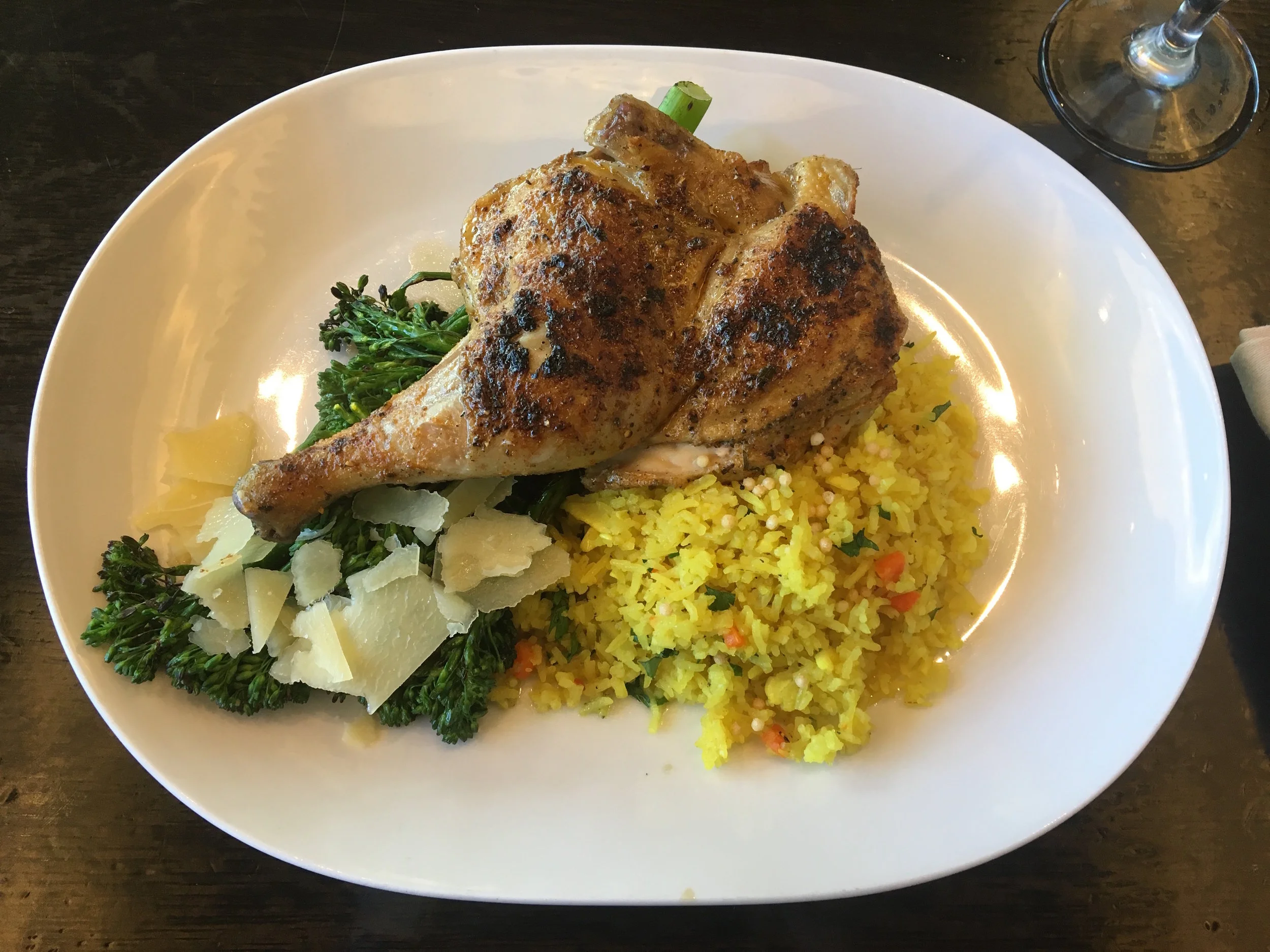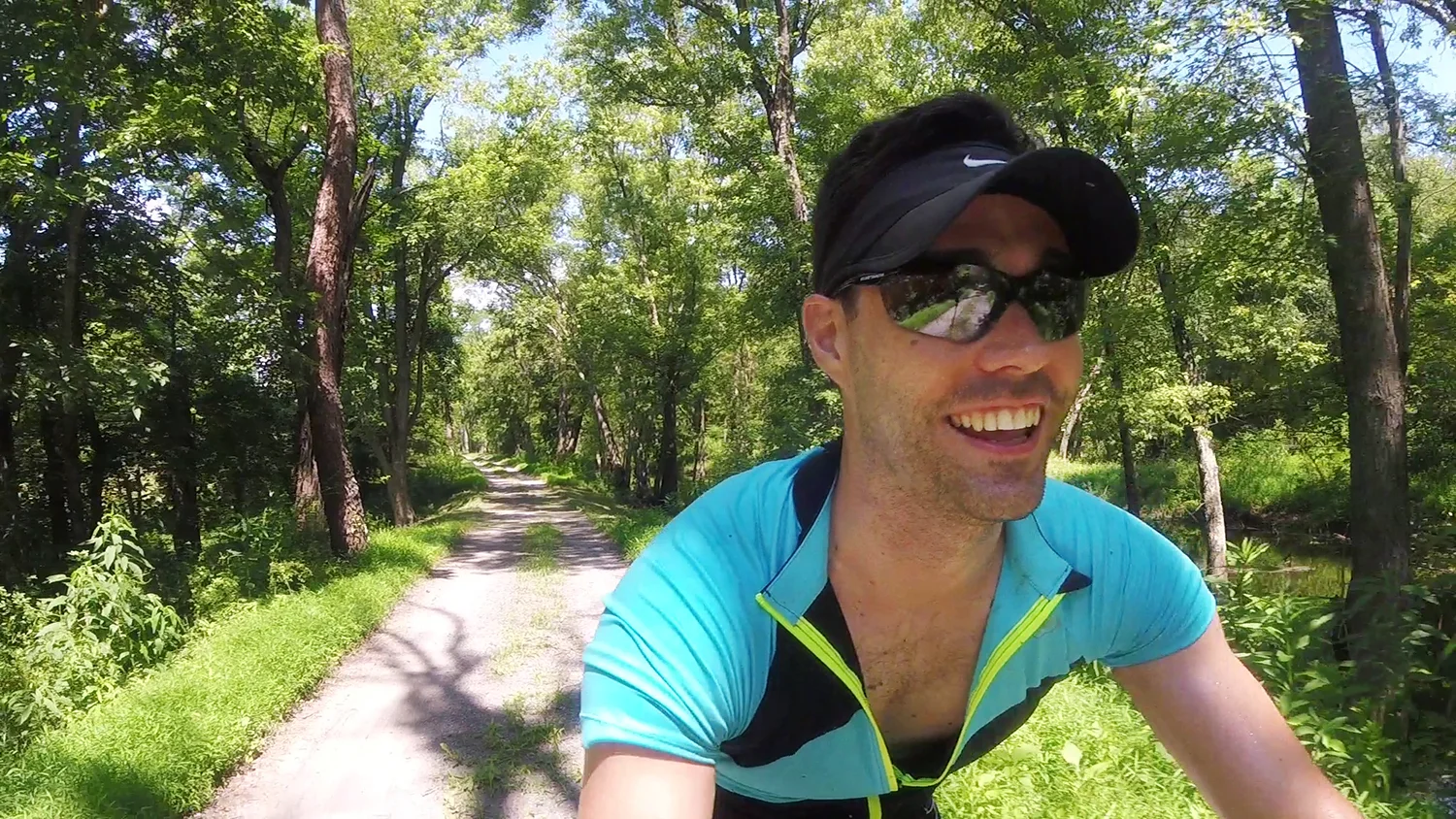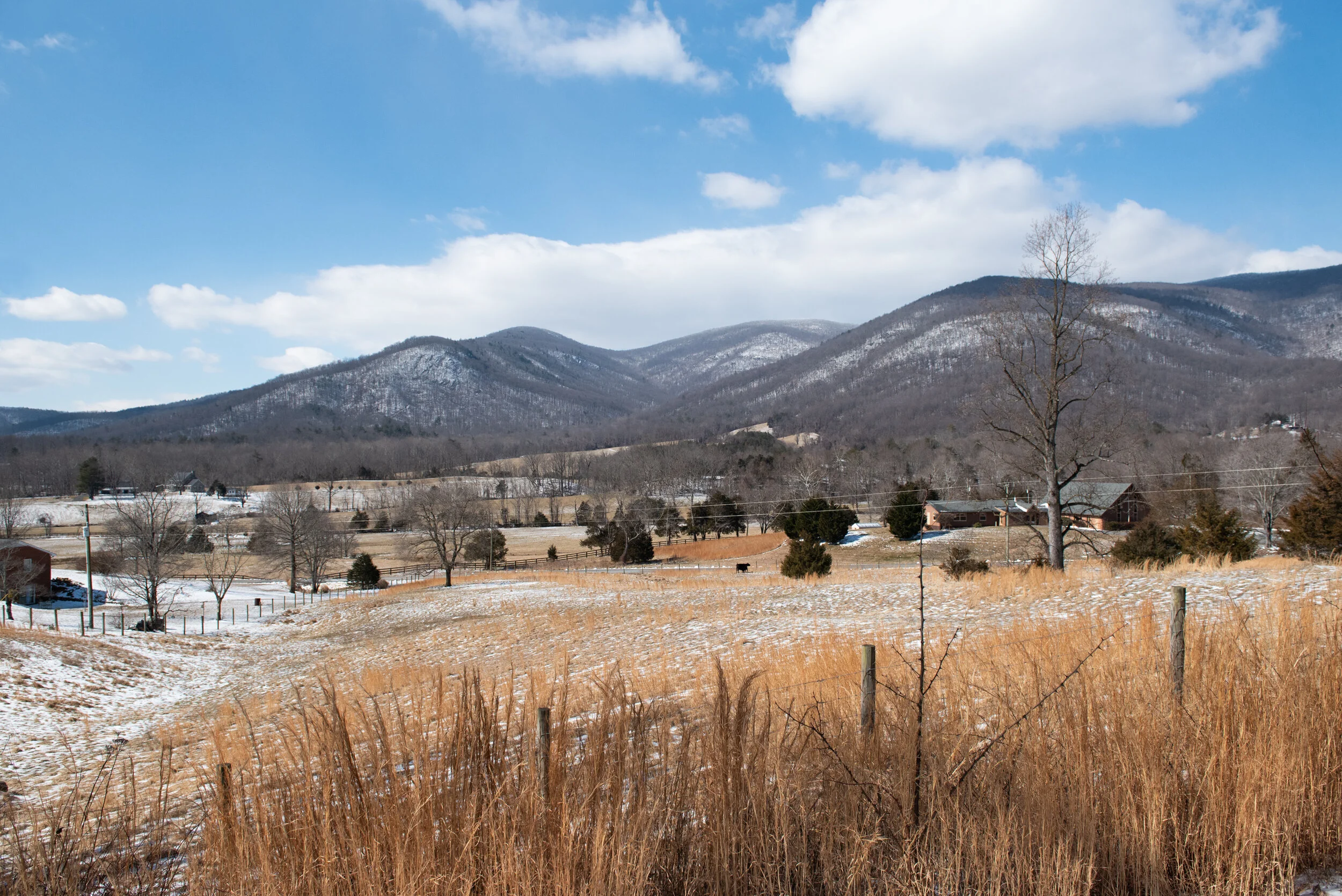Healthy Travels in Las Vegas
Disclaimer: This post may contain affiliate links, through which we earn a commission.
Do you have a habit of getting sick, either while traveling, or as soon as you return home from a trip? This has definitely been an issue for me. It’s no wonder, considering how much stress is placed on our bodies when we transport ourselves from one city, time zone, or even country and continent to another. Modern-day technology is completely spectacular, to be able to move, for example, from Washington D.C. to Johannesburg, South Africa (8000 miles / 12875 km) in just 18 hours. However, it’s also a process that can take a toll on our health. Moving, settling and resettling were, of course, a large part of ancient human history. However, our ancestors traveled slowly and begrudgingly, day in and day out, for weeks or months on end. Anyone here remember the 1980s computer game Oregon Trails? Through the game, your character’s pilgrimage would undoubtedly be halted at any given moment due to a broken wagon axel, the unexpected death of oxen, or coming across a trail submerged by a mudslide. Although frustrating, those life stressors are the sorts of experiences that a human body is designed to handle. And while our bodies amazingly find ways to adapt to the ability to fly half-way around the world in under 24-hours, the experience does have an impact on our health.
The process of travel, and especially air travel, has become increasingly more stressful over the years. I’ll never forget one of my first flights, as a preteen. I was flying up to Maine with my sister-in-law and her three young children. My mom and brother hugged us at the gate and waved as we boarded the plane. Of course, with the devastating tragedy of 9/11, the ability to greet a loved one at the gate has been long absent from the air travel experience. In its place came the frantic and invasive rush to take out your laptop for inspection, along with a quart-sized clear plastic bag full of your ever-so-personal toiletries, remove your shoes and belt, chug your water bottle, and walk barefoot or in socks on a germ-ridden floor, into a radiation-emitting body scanner. Experts may say that the radiation is minimal, but we are bombarded by radiation day in and day out from electrical devices and WiFi and the amount of radiation we’re exposed to over the span of our lives is cumulative. In addition to the body scanners, there’s all the radiation we’re exposed to on a plane, from being so high up in altitude, and possibly high in latitude depending on your flight path, as well as being surrounded by electrical wiring and WiFi. Add to that all the circulated air we’re breathing in, germs from all the people breathing that circulated air, germs from the bathroom escaping into the cabin, onto the floor, and blankets and pillows, and all the processed food and beverages. Then there are the chairs, completely unfit for real sleep, contributing to the risk of blood clots from sitting for too long. And lastly, there’s the shock to your system of being transported so quickly into a completely different climate and time zone.
It’s a scary list, right?? It almost seems like a good enough reason to lock your front door, and staycation forever! But traveling is also an amazing experience that opens up our eyes to the best and worst of what’s out there in the rest of the world. Fortunately, there are plenty of steps we can take to minimize the health risks of travel. As an ultra health-conscious individual who has spent a significant amount of time overseas over the last decade, I am sharing some of my travel habits, in hopes that this list will help you on your future journeys. Travel may pose health risks, but I continue to stand in that incredibly stressful line several times a year, to take off my shoes and belt, and place my laptop in a separate bin for scanning, because there are people and places far away from my everyday life that I love, and that I long to see with my own two eyes.
Without further ado, here’s my list of travel routines that I’m sharing with you, from a hotel room in Vegas that kicked off a 16-day adventure:
Eat well and go to bed early in the days leading up to your trip.
Prepping for a trip, while also keeping up with your day-to-day tasks at home and work, can be challenging. However, it’s important to plan ahead and do your body all the favors you can, with early bedtimes and wholesome, home-cooked meals prior to your departure. There will be moments along your journey when quality food just isn’t available, and you’ll be forced to make compromises to a healthy diet. Additionally, there will most likely be interruptions to your sleeping patterns, due to time zone adjustments, or maybe even from staying awake into the late hours catching up with a friend you haven’t seen in ages. The better you eat and rest in the days before your trip, the more gracefully your body will react when you do have to settle for less-than-ideal ingredients, and recover from jet lag. Before heading off to Vegas for this trip, I consumed loads of hearty chicken soup and stuck closely to the AIP diet.
Set goals ahead of time for foods you want to avoid - especially in a place like Vegas!
This list constantly changes for me, and it’ll be different from person to person. Gluten and nightshades are the top two foods I’m always striving to avoid. Since I’d gotten into a good rhythm with AIP before this trip, I made a significant effort to keep it up as much as possible. Fortunately, the Southwest has tons of gluten free and organic dining options. I wound up eating lettuce-wrapped burgers nearly every day, particularly at Habit Burger and the Burger Lounge.
Pack healthy snacks that travel well.
Many foods are welcome on an aircraft, and there is plenty of room for creativity in this regard. But be sure to avoid packing any food items that are watery, such as applesauce and yogurt, as these are considered liquid substances by TSA, and you’ll be asked to throw them out. If you are traveling domestically in the U.S., feel free to pack as much produce as you’d like. However, if you are traveling internationally, you may not bring produce onto international soil. In this case, only pack what you can eat on the plane, and then purchase fresh fruits and veggies at your destination. My favorite travel produce are apples, bananas, oranges, carrots and avocados, all of which can go several days without refrigeration. Avocados are amazing to bring along to breakfast when ordering eggs and bacon, for added protein and healthy fats. Whenever Wiehan travels, he takes two sandwiches along. Sometimes, I’ll take a sandwich made with gluten free bread. We also like making sushi wraps, filled with sticky rice, scrambled eggs and bacon. Rice cakes and peanut butter make for a great, filling snack, for those who tolerate nuts. Salads can also be a great meal, while in the air. I’ve been known to pack a large travel dish packed full of lettuce, sliced cucumbers and carrots, olives, and feta. Then I’ll add in a hardboiled egg, avocado, and a packet of tuna fish. I also bring sliced lemon to squeeze over the salad, to act as a make-shift salad dressing. It’s a delicious, substantial and refreshing meal!
Pack a BPF-free water bottle & Tea Bags.
Hydration is key while traveling! I usually pack a Hydro Flask in my checked luggage, as I’ve found that it keeps ice cold for about 12 hours, which can be handy throughout my travels. And I always have a Life Factory water bottle with me wherever I go. So I chug water at the TSA screening and then refill it on the way to my boarding gate. Upon arrival to my destination, if drinkable, filtered tap water is available, that’s the best option for filling my water bottle each day. Otherwise, we buy a large bottle of water from a pharmacy or grocery store, which saves money and minimizes plastic usage, compared to buying smaller bottles each day.
Another way to keep hydrated and boost the immune system, while saving money is to pack your favorite tea bags in your carryon. Ask for a cup of hot water at any cafe. Some may charge a nominal fee, but most will provide this service free of charge.
Pack non-toxic hand wipes and spray.
Wiehan and I are both very germ-conscious. As such, we like to pack hand wipes to wipe down our tray table and armrest at our airplane seat, as well as to easily sanitize our hands. And we also pack disinfectant hand spray. We like the brand CleanWell, with all-natural ingredients. For a more economical option to buying lots of travel packs, I buy the 160-count tub, and then transfer the wipes from the plastic container to a sandwich-sized ziplock bag.
Consider alternatives to the TSA scanners.
I was traveling internationally quite a lot when those controversial backscatter X-ray machines were implemented. However, I completely avoided being scanned by these machines, simply by requesting a pat-down instead. While it took extra time and infringed on my personal space, I chose the inconvenience of the pat-downs over radiation exposure. Ever since the backscatter X-rays have been removed and replaced by the millimeter wave scanners, I’ve obliged with the technology, rather than requesting the pat-down. However, as I learn about the dangers of radiation, as well as the significant amount of exposure we receive on a daily basis, I might give it another thought. Another option is to apply for TSA Pre-Check, through which travelers are supposedly only subjected to an old-fashioned metal detector, and aren’t required to remove laptops from bags or shoes from feet. If you’re interested in reducing your radiation exposure on a daily basis, consider looking into products by Defender Shield. I own the iPhone 6+ SlimFlip Case. Additionally, check out my blog post about switching to a nontoxic mattress, in which I discuss simple steps that can be taken to reduce radiation exposure at nighttime.
Turn the overhead air unit off at your airplane seat.
This is one of Wiehan’s personal tricks. He’s found over the years that he can get sick from air blowing directly on him. So while the airplane may feel stuffy as you board, be cautious with that overhead air unit.
Pack Immune-Boosting Supplements and Essential Oils.
I used to take handfuls of supplements daily, but I’ve come to rely less heavily on capsules and more heavily on foods packed with nutrients, like organ meats and meat stock. On a daily basis at home, I take Fermented Cod Liver Oil. And whenever I feel the pangs of a headache coming on, I quickly pop two Magnesium pills. Dehydration is normally the cause of headaches in my case, so I also usually drink 8-ounces of Metagenics Endura. Unfortunately this product is currently unavailable, so for electrolyte replacement, Wiehan uses Ultima for training purposes, and I opt for a homemade hydration beverage.
Whenever our immune systems take a hit, we both like to take Vitamin C. And it’s a great idea to take probiotics each morning when traveling, as a way to support your gut micro-biome. In the event that you begin to feel a tickle in your throat, Boiron ColdCalm tablets are amazing for keeping colds at bay. Though I’ve found that their effectiveness relies on the maintenance of other healthy habits, like staying away from sugar, and getting good bedtimes. If I eat a sugary dessert and go to bed at midnight on the same day that I feel cold symptoms coming on, that cold is probably coming for me in a powerful way, despite supplements and homeopathic remedies.
In addition to supplements, I have a list of must-pack essential oils. Tea Tree Oil has amazing antiseptic properties. I was once given the advice to dab this on my nose several times throughout an airplane flight so that it would provide moisture and well as germ-fighting action to my sinuses. But this comes with a caveat: make sure to dilute the tea tree oil with coconut oil. Without it, I’ve wound up with very dry and cracked skin around my nose, which isn’t a great look while jet-setting around the globe! I’ve also found the combo of coconut oil and tea tree oil to be a great waterless soap substitute, offering a nice moisturizer to hands. Medieval Mix is also brilliant for staving off colds. Dilute 1 drop of medieval mix with coconut oil, and rub on the bottoms of feet just before bedtime, for a natural boost to your immune system. Either of these essential oils can also be useful for first aid purposes, in the event that you need to disinfect cuts and scrapes.
Pack Epsom Salt.
A magnesium bath is a must after air travel. It’s a gentle and soothing detox that relaxes sore muscles and actually works to draw out the harmful affects of radiation from your body. Add 2 cups of epsom salt to a tub of hot water, along with 5-10 drops of your favorite relaxing essential oil. Soak in the tub before bedtime, for a minimum of 20-minutes, or until the water cools off. Do not use soap when taking an epsom salt bath, as the ingredients in the soap can work against the healing affects of the epsom salt. When you are finished with your bath, do not rinse off in the shower. Instead, pat dry and dress in cozy pajamas, then head to bed! Keep in mind that a magnesium bath will often cause feelings of drowsiness, and sometimes even dizziness / light-headedness. Thus nighttime is best for this therapy. If you do not have a full bath available at your accommodation, a foot bath in a smaller container can be just as effective.
Get plenty of rest when you arrive to your destination.
Take a day to rest from travels and recover before jumping into activities. Take naps, limited to less than an hour, and only during the middle of the day. Get early bedtimes. You can also decide whether or not you want to adjust to the time zone of your trip. If you’re only going to be away from home for a long weekend one or two time zones away, then it may be worthwhile to keep all your clocks set to your home time. But if you’re traveling for a week or more to a further location, it makes more sense to adjust.
Eat a good meal upon arrival to your destination.
I always feel so much better after flying when I’m able to eat a well-balanced meal at my destination that includes a generous portion of meat, along with starchy vegetables, salad and fruit. In addition to all the other plans for your trip, it’s a great idea to browse Yelp for restaurants near your accommodation that offer wholesome meals. A search for nearby grocery stores and pharmacies is also helpful, so that you know what to expect in terms of what’s available.
Go outside and see as much sunshine as possible.
This will depend on the weather at your destination. The worst jet-lag I ever had was when I arrived in Ireland on a dark and drizzly day. It took days to recover. But this is hardly ever an issue when I travel to sunny Joburg. The timing of arrival in Joburg from DC works really well for jet lag recovery, as the plane usually lands around 5pm, allowing just enough time for a good meal, the opportunity to settle in at my accommodation, a rejuvenating magnesium bath, and an early bedtime. By the time I get in bed, I’m completely exhausted and can usually sleep 6 or more hours that first night. The next day, the glorious South African sunshine sparks all kinds of energy, helping to adjust quickly into the time zone and schedules.
Stay active!
I like to pack a yoga mat for stretching. Check out my daily stretching routine here! I also pack running gear, so that I can get in some good cardio every few days. If we stay in a hotel, then there’s usually a great fitness room, as well as a pool to get in some laps. We also sometimes rent bikes. For the Zwifters out there, Wiehan has created a video that provides instruction on how to connect a spinning bike to the platform. There are plenty of ways to get exercise while out on the road, and usually the best way to explore a new place is by foot or by bike!
Try to avoid being wasteful.
I like to pack reusable food containers and utensils, along with dishcloths and dish soap, for the ability to wash out the containers and utensils after each use. I also pack reusable grocery shopping bags, so that we don’t collect a bunch of plastic bags as we go. Unfortunately, I’ve currently found that most public places, including hotels and airports, do not offer proper recycling and compost options. Hopefully this will become more readily available with time. But at the present moment, it’s a shame that so much food waste gets sent to landfills rather than into regenerative composting systems.
All this travel prep is a lot of work, but totally worth it!
This list may seem really overwhelming, but they are steps that I have developed over years of experience. Feel free to pick one or two to try, and then build up from there. It’s a process. And if you do get sick, give yourself rest! It might mean canceling a few plans during your trip, but relaxing in bed could actually feel like a luxurious break from the busyness of your daily life back home. I came down with a fever upon arrival to South Africa last year. My body was completely exhausted and begging me for rest. I had to cancel a few plans to see friends with little ones, for my concern of spreading germs. Instead, I spent two full days sleeping in the guest room at my in-laws’ house, and a third day sleeping in the car on a two-hour drive to visit Wiehan’s grandparents. As much as I was sorry to miss socializing with a few special people earlier in the trip, that time of rest felt amazing. And because I gave myself the rest I so desperately needed, the fever broke within 72 hours, and I was energized and ready to jump into the socializing for the remainder of our trip. To find out more about my tips and tricks for healthy travels, check out this video!
- Christin
Tell us! Do you have any tips for avoiding sickness when you travel?












